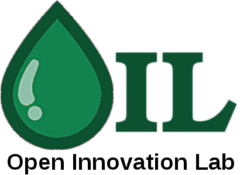The automotive industry is in a transitional phase where new and increasingly sophisticated active safety and driver support functions are being deployed at an increasing rate, and which are step by step getting closer to fully autonomous driving. Such functionality is to a large extent realized by software—a big change in itself for the automotive industry traditionally centered on mechanical and electrical engineering. This also means that software engineers can be added to the crowd of automotive innovators and developers. But for software engineers to be able to quickly create, test and demonstrate prototypes, they need accessible and cheap environments to work in and that facilitate collaboration between the vehicle manufacturers and third party software developers. Today, such environments are typically specialized and proprietary with expensive licenses, and often incompatible with each other leading to lock-in and difficulties in exchanging artifacts between environments—effectively a barrier for open innovation.
The goal of the project Open Innovation Lab, jointly funded by the VINNOVA FFI program and industrial partners, was to develop tools to facilitate, and demonstrate, open automotive innovation. The project, which ran between April 2017 and March 2019, was divided in two sub-projects.
Sub-project 1, Simulator platform and tool-chain, aimed at developing an open license-free simulation platform and tool-chain for supporting development, test, and demonstration of automotive software components, with a strong focus on standards to facilitate interoperability.
Sub-project 2, VCC Infotainment Proof-of-concept, aimed at demonstrating open automotive innovation by engaging university students to develop applications for the infotainment head-unit of a Volvo car using the Android Automotive platform.

and coordinated by RISE (formerly Viktoria Swedish ICT).
Results
The project results comprise documentation and a downloadable simulator as an example of instantiating the proposed simulator platform.
The final seminar presenting the results from the project was held at Lindholmen Science Park, Göteborg Sweden Tuesday March 26, with about 40 participants. The presentation material can be found here.
Sub-project 1—Simulator Platform and Tool-chain
For sub-project 1, a simulator platform architecture was developed and documented. The platform was instantiated with three different configurations using existing open tools from the project partners, and two proof-of-concept third-party functions were developed and integrated into virtual representations of a car and a truck. The results show that the platform is flexible with respect to configuring a simulators for the purpose of developing, testing and demonstrating a software function by a third-party.
Project report
The project report documents the simulator platform and tool-chain—its background and stakeholder needs, architectural patterns, the platform architecture, an inventory of existing tools that can be used when instantiating a simulator, as well as documentation of two simulator instantiations.
The project documentation can be downloaded here.
Demonstration Simulators
As proof-of-concept, a number of simulators were created and documented (see chapter 7 in the project documentation for details).
Here one such PoC simulator is provided. In the simulator, the scenario is a platoon of three simulated vehicles are driving on a motorway when an overtaking vehicle (controlled by the scenario) cuts in front of the platoon and brakes to a stand still. The three vehicles are represented in the simulator as FMUs with an exposed interface that allows 3rd-party functions to be developed, integrated and tested. In the PoC simulator, an emergency automatic brake function (AEB) was developed in OMEdit and integrated with all three simulated vehicles.
The tutorial is divided in two, the spectator and the developer guide. The spectator guide provides step-by-step instructions on how to run the PoC simulator as is, while the developer guide provides instructions on developing, integrating and testing your own 3rd-party function (e.g. by modifying the AEB-function included in the simulator workspace).
Prerequisites
- Windows 7 or later
- JDK 8 (64-bit)
- MSBuild 15
- Windows SDK 10.0.17134.0
- Nuget
- OIL Proof-of-concept Simulator package (tutorial included in the package)
Tutorials
- How to install and run the PoC simulator (PDF)
- Tutorial for 3rd party function developers (PDF)
- Notes on the developer’s open source workflow (PDF)
Sub-project 2—VCC Infotainment Proof-of-Concept
For sub-project 2, an Android Automotive image compatible with Android Studio was developed. The image was constructed such that the students would be able to develop their applications without the need to access a real car. Instead a signal generator (essentially a very rudimentary simulated car) was connected to the Android vehicle integration layer. The students could then edit a simple text file specifying a test case in the form of timing and values of signals that the vehicle would send to the application. This allowed students flexibility in defining their test-cases and at the same time providing a familiar and open development environment.
The university students each spent approximately 100 working hours in groups of 5-6 over 5 calendar weeks to develop their applications. The sub-project was concluded with a half-day workshop at the infotainment department at Volvo Cars were the students presented their applications to industry practitioners (see slides 13-19).
Contact us!
For questions, comments or requests, don’t hesitate to contact us.
